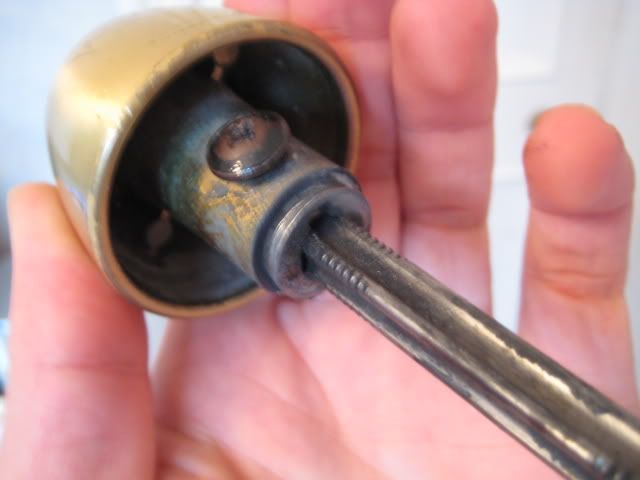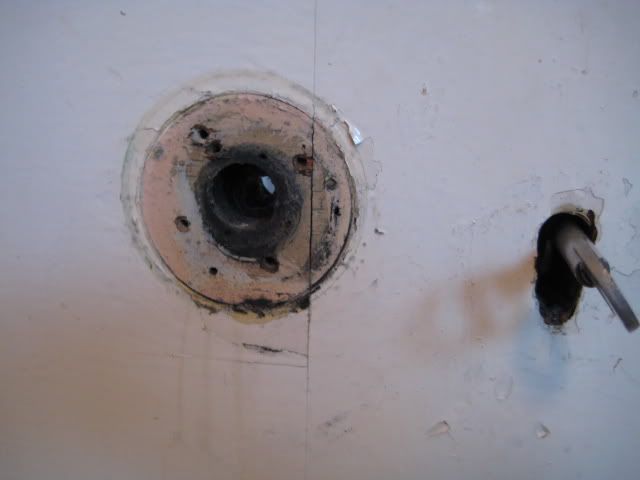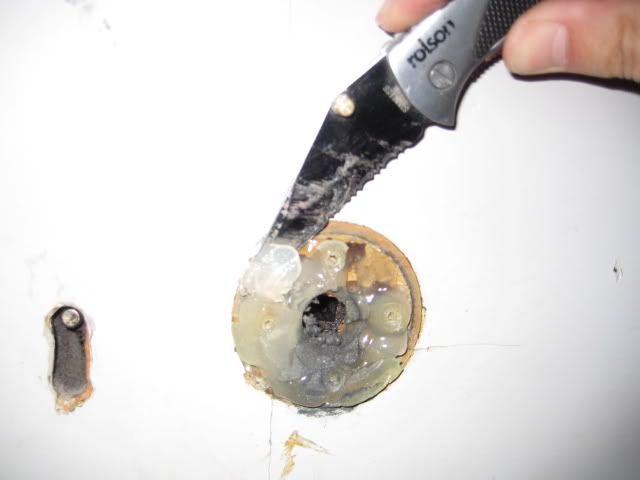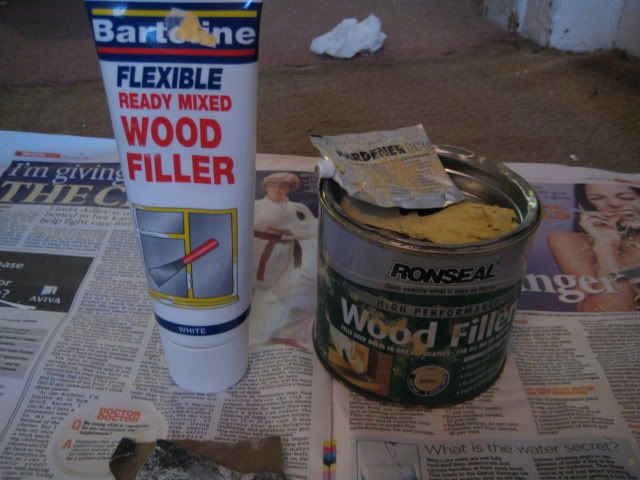There's a fair few different systems door handles work by. From what I’ve googled, I think this type is typical of Victorian - era flats & houses. The handles screw onto a threaded spindle till they fit snug against the door. Then a grub screw locks the handle in this position, so when you turn the knob, the spindle moves with it, opening the latch mechanism. Here's the state of the old set (obviously not originals). The spindle is so worn, the grub screw has been swapped for something bigger to try to grip it (I'm sorry for the picture quality on some of these photos, I was using an unfamiliar and faulty camera for some of them).

With the handles off, the roseplates - those things the handles back onto - were next. The one on the outside revealed a surprise. The photos below show a good surface behind one roseplate:

... and a strange mass of semi gelatinous silicone under the other.

The reason became apparent after I cut it out. All that was left of the wood behind the silicon was a few splinters! This is Not On. I got out the wood filler.

I've come across two types of wood filler before. In the picture above, the tube on the left is decorative stuff that sands down smoothly, but has no strength. The tin on the right is a really strong filler that sets solid, can be used out of doors, but is harder to sand to a smooth finish. That's what I wanted here; I needed something strong enough to screw into. It didn't matter about a super-smooth finish, as the new roseplate would be completely covering the damaged area. The next section shows how I went about filling this unexpected hole.
No comments:
Post a Comment
Comments seem to be working okay again. You can try leaving one, it might work! If not, you can reach me on twitter if you like @Flounder_FPN